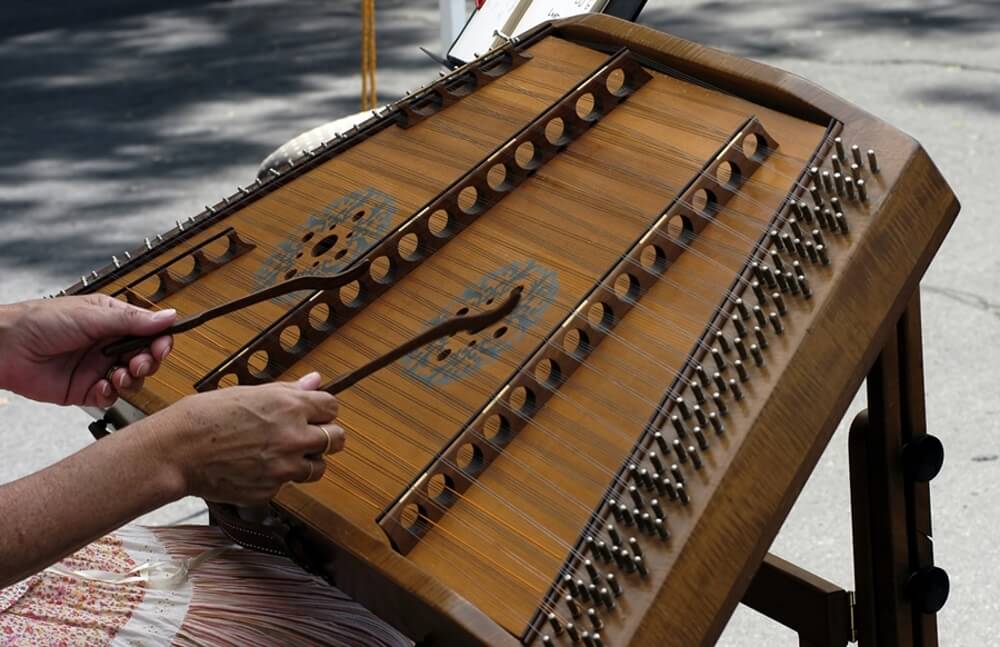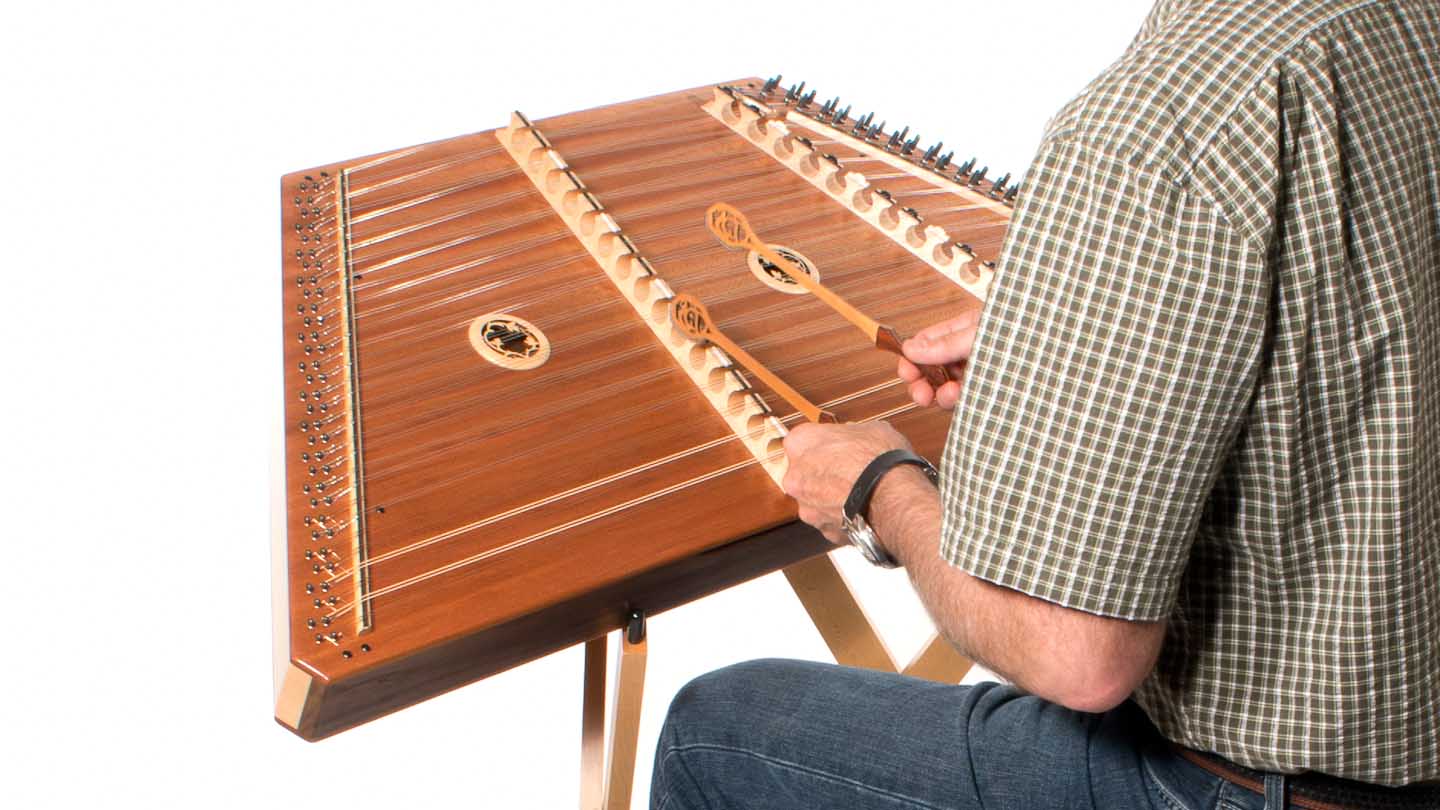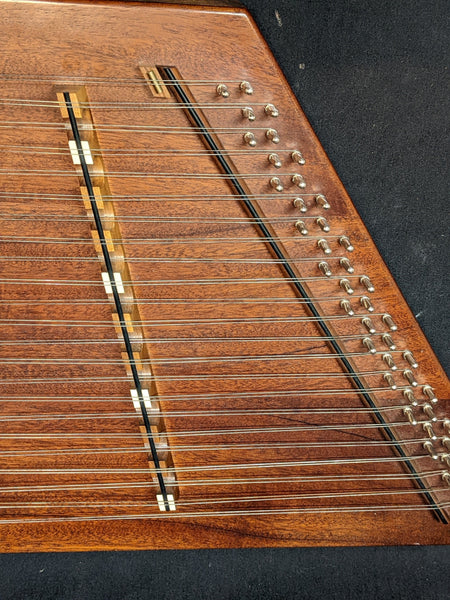How To Tune A 12 11 Hammered Dulcimer: To tune a 12/11 hammered dulcimer, start with the highest-pitched course on the treble bridge and adjust the tension until the desired pitch is reached. Repeat this process for each course, both on the treble and bass bridges.
Understanding the Basics of the 12/11 Hammered Dulcimer
To begin our journey, let’s understand the instrument itself. The 12/11 hammered dulcimer is so named because it consists of 12 courses on the treble bridge and 11 on the bass bridge. Each course is made up of two strings, which are played by striking them with hammers. The strings’ length determines their pitch, and adjusting the tension in each course enables us to tune the instrument.

Preparing the Dulcimer for Tuning
Before diving into the tuning process, there are a few essential preparations to ensure accurate and effective tuning. Here are the necessary steps:
- Clear the instrument: Remove any dust or debris from the strings, soundboard, and bridges using a soft cloth or brush.
- Check for structural issues: Inspect the instrument for any cracks, loose pins, or other damages that may affect the tuning. Address these issues before proceeding.
- Gather the necessary tools: You will need a tuning wrench or hammer, electronic tuner, or a reference pitch source such as a piano or tuning fork.
Tuning the Treble Bridge
The treble bridge is where the higher-pitched notes are produced. To tune the treble bridge of a 12/11 hammered dulcimer, follow these steps:
- Identify the courses: Starting from the left side, number the courses from 1 to 12.
- Tune the first course: Begin with the highest-pitched course (usually the shortest string). Use your tuning wrench or hammer to adjust the tension until the pitch matches the desired note.
- Repeat the process: Move systematically from left to right, tuning each course to the desired pitch. Remember to strike the strings gently while adjusting the tension to avoid breaking them.
- Fine-tune: Once all the courses are roughly in tune, go back and make small adjustments to achieve perfect harmony between the notes.
Tuning the Bass Bridge
The bass bridge produces the lower-pitched notes. Follow these steps to tune the bass bridge:
- Identify the courses: Starting from the left side, number the courses from 1 to 11.
- Tune the first course: Begin with the lowest-pitched course (usually the longest string). Use your tuning wrench or hammer to adjust the tension until the pitch matches the desired note.
- Repeat the process: Move systematically from left to right, tuning each course to the desired pitch. Again, strike the strings gently while adjusting the tension.
- Fine-tune: Once all the courses are roughly in tune, go back and make small adjustments to ensure harmonic balance across the bass bridge.

Maintenance Tips and Best Practices
Maintaining your 12/11 hammered dulcimer’s tuning is essential for its longevity and sound quality. Here are some additional tips to consider:
- Regularly check for tuning adjustments: Environmental factors like temperature and humidity can affect the dulcimer’s tuning. Monitor and make adjustments as necessary.
- Use a tuner or reference pitch: To achieve accurate tuning, it is recommended to use an electronic tuner or a reliable reference pitch source like a piano or tuning fork.
- Tune from the center: Start tuning from the middle courses of both bridges and work your way outwards. This approach helps maintain overall stability and balance.
- Be patient: Tuning a hammered dulcimer can be a meticulous process. Take your time, and be patient as you make small adjustments to achieve the desired pitch.
What is the standard tuning for a hammered dulcimer?
The standard tuning for a hammered dulcimer typically follows a diatonic scale. The most common tuning for a hammered dulcimer in the key of A is A Mixolydian mode. In this tuning, the courses on the treble bridge are usually tuned to A, B, C#, D, E, F#, G, A, B, C#, D, and E from left to right. On the bass bridge, the courses are tuned to A, B, C#, D, E, F#, G, A, B, C#, and D. However, it’s worth noting that tunings can vary depending on the player’s preference and the musical style being played.

What notes do you tune a dulcimer to?
The specific notes you tune a dulcimer to depend on the desired key and tuning system. In the case of an A dulcimer, commonly used tunings include A Mixolydian mode, D Ionian mode (or D major scale), and G Ionian mode (or G major scale). For A Mixolydian tuning, the treble bridge is typically tuned to A, B, C#, D, E, F#, G, A, B, C#, D, and E from left to right, while the bass bridge is tuned to A, B, C#, D, E, F#, G, A, B, C#, and D. These tunings provide a foundation for playing melodies and harmonies in the key of A.
FAQs
How often should I tune my hammered dulcimer?
Ideally, you should tune your hammered dulcimer every time you play it. However, it is especially important to check the tuning before performances or extended practice sessions.
Can I tune my hammered dulcimer by ear?
While it is possible to tune by ear, using an electronic tuner or reference pitch source ensures greater accuracy, especially for beginners.
What should I do if a string breaks while tuning?
If a string breaks, replace it with a new one that matches the gauge and material of the existing strings. It is recommended to keep spare strings on hand.
Conclusion
Tuning a 12/11 hammered dulcimer is an essential skill that enhances your playing experience and allows you to explore the instrument’s vast musical possibilities. By understanding the basics of the dulcimer, following a systematic approach, and employing maintenance best practices, you can achieve a harmonious and resonant sound. Remember to be patient, enjoy the process, and let the dulcimer’s melodies enchant you as you play.


